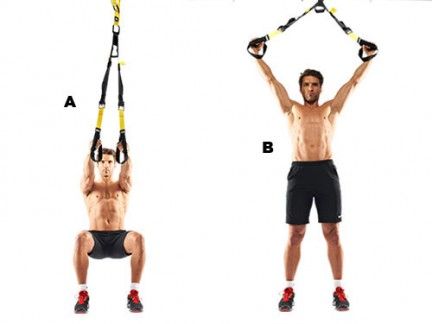Watch TRX Director of Rip Training, Pete Holman, show you how to develop strength in your core, lower back, lats, shoulders, arms and legs by incorporating the Stability Principle into your Rip Training regimen.
You may remember the Stability Principle from the TRX Principles of Progression. Essentially, the more points of contact your body has with the ground and the wider your base of support, the easier an exercise will be. Think of it in terms of architecture. A building with a wide base and a low center of gravity, like a pyramid, is going to be far more stable and harder to topple than a building with a narrow base and a high center of gravity, like a sky scraper.
If you want to increase the difficulty of any Rip exercise, try turning your pyramid into a skyscraper by narrowing your base of support (bringing you feet closer together), which will force you to stand up taller, moving your center of gravity higher. If your base is less stable, it forces you to recruit more stability from your core. As you can see in the video above, when Jamie brings his feet together to perform a Rip Press, he really needs to engage his core and lower back to achieve the necessary proximal stability for distal mobility.



